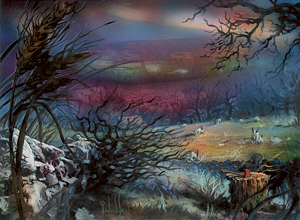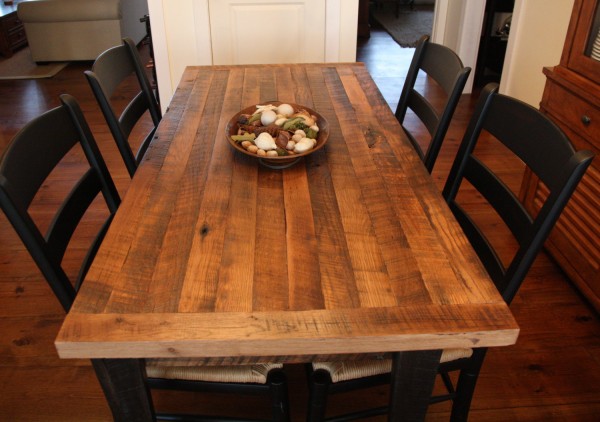Are you a Quiet Speculation member?
If not, now is a perfect time to join up! Our powerful tools, breaking-news analysis, and exclusive Discord channel will make sure you stay up to date and ahead of the curve.
I've written a lot about how bulk works across three different websites in the past three years. I've suggested what cards you should pick, how to acquire bulk, how to sell bulk, and what to do with the quarters and dimes that you pick. There's one subject that has stumped me for the past few years, though, and that's teaching you what casual cards to pick on your own, without me just linking you to a list and saying, "Here, pick these. Don't ask why." While we've come a long way in Magic finance in the past few years, and there are a couple comprehensive buylists out there that can give you a good overview of exactly what's pickable, nothing comes close to having the skills to figure out new picks without having to reference a spreadsheet every dozen or so cards. This article isn't going to be the end-all solution to that problem, but it's a good jumping off point for those of you who are new to picking bulk, or who pick their bulk but are only used to pulling competitive staples like Boros Charm and Thought Scour. There's an entire world of 78-card unsleeved casual Magic out there, and money to be made by understanding these players' thought processes and desires.
I'll preface the meat of the article with a link to The Blueprint, because I know that is likely to come up in the comments. The Blueprint is updated every month with new cards and prices, and includes even the bulkiest of bulk picks (down to .03 for some commons that you would never expect). If you want to memorize The Blueprint, or even just memorize all of the cards that are worth a dime or more, that's fine. You do what works for you.
Other People Bought...
This week on Brainstorm Brewery, Corbin brought up an excellent #breakingbulk pick that happens to be a great example for what I'm going to talk about. Let's look at Springjack Shepherd for a minute. It's a really obscure card from a hardly opened set that makes a little herd of Goats when it enters the battlefield. A few months ago, it saw the tiniest bit of play in a Modern devotion deck that never really flourished or showed results in anything other than MTGO daily events. I'm here to tell you that there's another market for the card, and that is casual Goat tribal. What? Yep. Goat tribal is a thing that players build. It's not a pile of cards that you'll be likely to see at FNM. It's not a Commander deck led by some white-weenie anthem lord, it's just good, old Magic cards being put together in a pile like in 1997. I've never played against it or sold cards to someone who told me they were building it, so how do I know it exists?
If you go on TCGplayer and look at a card's price page, you get a lot of useful information. The lowest listing per condition, the market price, the average buylist price, and you can even get some comedic value if you scroll down to the Facebook-linked comments section once in a while. One piece of information that I've never really discussed is the window labeled: "Customers who bought this also purchased..." This is mostly useless for spikier players and competitive brewers who know the exact parameters of the decks they're building. These people are going on SCG or Wizards's home page, and checking exact lists and statistics for the cards they need before they buy them. However, the "Other people who bought X bought Y" can come in extremely handy when figuring out the mind of a not-so-competitive player.
Let's go back to our Springjack Shepherd example. While it got some hype on Reddit that caused the initial spike, the price didn't exactly plummet back down to bulk or near bulk. While some of that is price memory, someone is still buying these Shepherds at $1 to 1.50 to make it worth listing them. This is the kind of deck that bridges the casual and competitive crowd, the Johnny who wants to make his deck work just once at FNM to see the shocked expression on the Jund player's face.
These are ten of the fifteen total "other people bought it" cards beneath Springjack Shepherd. You see a couple similarities between the Modern list that the linked Reddit user took to FNM (Obelisk of Urd, Soul Warden, Cloudshift), but there are a couple striking differences that certainly don't have any connection to the competitive list. Trading Post? Nyx-Fleece Ram? Heck, one of the other five cards not shown is Mirror Entity. As much as a PTQ grinder wouldn't think about spending $100 or more on a Goat deck just as a laugh with their friends, it is absolutely a thing. And you can use this list of cards to find other casual picks that you wouldn't think to find otherwise. Did you know you can still buylist Nyx-Fleece Ram for quarters sometimes? I mean, the card sees play in other casual life gain decks, but it's literally on this list because it's a Sheep. "Enchantment Creature — Sheep." It has no synergy with Goats, but it's in a similar animal family.
Let's go with another example, branching off a card that might be more familiar to readers. Relentless Rats is a pretty well-known commodity. Besides basic lands, any card that you need 30 copies of is pretty pickable, and Rats are already a home-run casual tribe with two printings. Here are five of the cards that pop up on the "other people bought this." Not even Corbin Hosler knew about this one when we talked about it on Brainstorm Brewery this week. Swarm of Rats is "as low as .58" on TCGplayer, but pretty much all of the NM listings are a solid $1.00. I've sold this card for $0.75 at Grands Prix before, and all the printings being fairly old means that there's a very low supply out there. If you knew that Relentless Rats were a pick and wanted to see what other vermin you should be pulling from bulk, you can search for Relentless Rats on TCGplayer and check what the so-called "invisible" casual market has been picking up on.
Of course, this can also hold true for the less popular competitive formats that Standard and Modern players might not be as up to date on. Pauper has been increasing in popularity lately, with price increases on Chainer's Edict and Oubliette signifying real demand for a cheaper version of the Modern/Legacy experience. We've mentioned Journey to Nowhere before on Cartel Aristocrats, and using this method can check out the Pauper players who have been jamming the card in lists with Mulldrifter, Lone Missionary, and Preordain. All of those are excellent picks that may have gone unnoticed if you locked yourself into Standard or EDH exclusively.
Even if you fail to find a pick by extrapolating from a card you look up on TCGplayer, you can still get a feel for what type of decks casual players enjoy building. Dash Hopes is another favorite of mine, because it's a favorite of the people I sell to. A Spike looks at this card and thinks, "It's always the worst of the two, my opponent can choose which one benefits them the most, and it will never do what I want it to if my opponent is smart." My customers think, "This is a black Counterspell! If they don't let me counter their spell, then they lose five whole life! Five damage for two mana is freaking sweet!" It's all about perspective and their desire to have fun. Look up Dash Hopes on TCGplayer, and let me know what you think about some of the decks people are building with it.
Downsides
Unfortunately, this isn't a perfect system. We aren't given empirical data by TCGplayer (with good reason, I might add), so we don't know exactly when these cards were bought together or how often card X and card Y were checked out in the same shopping cart. Some of the data could be really old; for example, Summer Bloom still lists several key components of the now-banned Modern Amulet Bloom deck as related cards. Unless there's a market out there for building banned decks that I don't know about, it appears that the data collected from TCGplayer in that situation would be several months old, and people may have just not been buying Summer Blooms at all.
End Step
There wasn't really anything interesting happening this week worth talking about here, so let's just look at how you can jump from one card to another until you eventually find a pick you didn't know about. You all know that Slippery Bogle is $3, right? Well, people who buy that also buy Hyena Umbra. Well, that's also a pick, because it's played in Modern in addition to some casual and EDH lists. Still not really surprising. What about jumping off of Hyena Umbra to Shield of the Oversoul? A really old casual card with no reprints that attracts a lot of love in, not Modern, but EDH and casual. And from Shield of the Oversoul we can continue onto Steel of the Godhead, a card that Bruna EDH players know by heart, but doesn't really see much love anywhere else. Yet it still find a place on the quarter section of the buy mat, and that's why I write these articles. Until next week!











Love it!